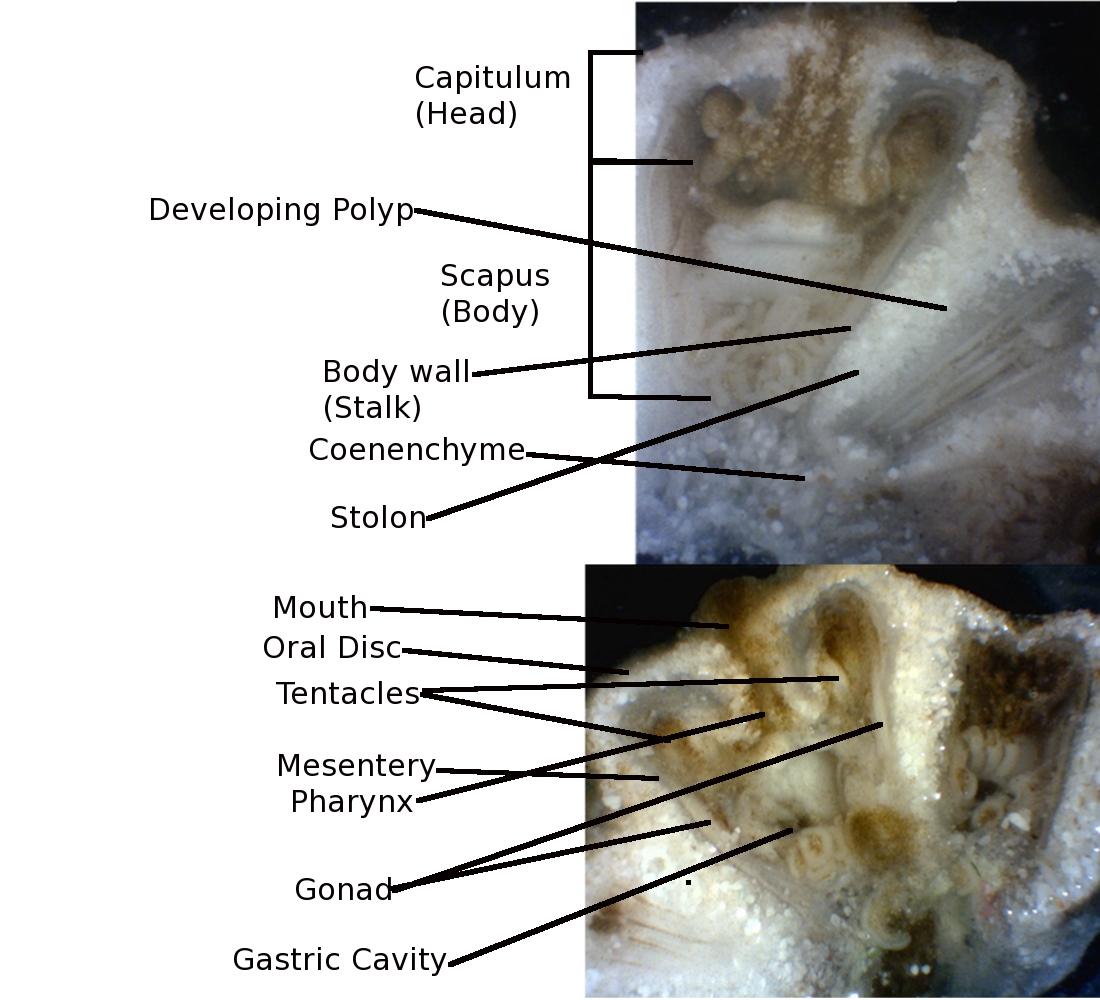 External Morphology External Morphology 
 P.caesia incorporate sediment, sand, and rock in a soft tissue mat called coenenchyme or mesoglea for structure formation (Ruppert et.al., 2004). Just like other Zoanthids, the polyp of P.caesia is radially symmetrical around the oral-aboral axis. Radial symmetry is when a vertical cut from the axis to the other side and would produces two equal halves. Being a suspension feeder, radial symmetry allows it to capture prey any directions (Ruppert et.al., 2004). P.caesia incorporate sediment, sand, and rock in a soft tissue mat called coenenchyme or mesoglea for structure formation (Ruppert et.al., 2004). Just like other Zoanthids, the polyp of P.caesia is radially symmetrical around the oral-aboral axis. Radial symmetry is when a vertical cut from the axis to the other side and would produces two equal halves. Being a suspension feeder, radial symmetry allows it to capture prey any directions (Ruppert et.al., 2004).
P.caesia has a flattened, smooth oral disc that are very broad, with no present of tentacles on the surface of the disc. Alternatively, two rings of tentacles arranged around the edge of the disc and occur in exococelic and endocoelic cycle (single marginal ring) (Ruppert et.al., 2004). The mouth is generally slit-like and appear to locate in the middle of the oral disc. The tentacles are usually cream, coffee, white, brown, or yellow. The column wall is without special external structures, column and coenosarc covered by thick periderm. The tentacles are responsible for feeding and contain nematocysts that are capable of paralyzing the prey so that they can be pushed by the tentacles towards the mouth. Nematocysts (stinging cells) occur in dense concentrations inside the tentacles and are used for defenses and feeding (Ruppert et.al., 2004).
|